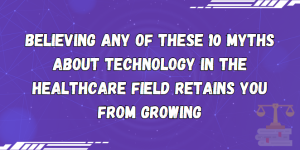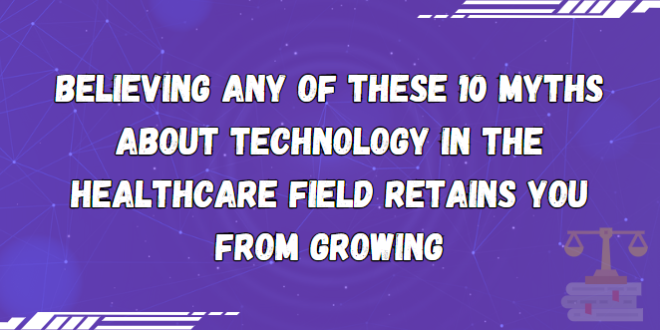The integration of technology in the healthcare field has revolutionized the way we approach patient care, medical research, and healthcare management. However, there are several myths surrounding technology in healthcare that can hinder progress and growth. In this article, we debunk 10 common myths to help you embrace the true potential of technology in healthcare.
Myth 1: Technology Is Replacing Healthcare Professionals

Contrary to popular belief, technology is not replacing healthcare professionals. Instead, it is enhancing their capabilities and improving efficiency. Technology allows healthcare professionals to streamline administrative tasks, access patient records more easily, and focus on providing quality care.
Myth 2: Technology Compromises Patient Privacy
Privacy and security are major concerns in healthcare, but technology is continuously advancing to address these issues. Strict regulations and encryption protocols ensure patient data remains secure. Additionally, technology enables better control over data access, ensuring that only authorized individuals can view sensitive information.
Myth 3: Technology Is Too Expensive for Healthcare Providers
While there may be upfront costs associated with implementing technology in healthcare, it can lead to long-term cost savings. Technology streamlines processes, reduces paperwork, and improves efficiency, ultimately saving time and resources for healthcare providers.
Myth 4: Older Patients Cannot Adapt to Technology
Age should not be a barrier to embracing technology in healthcare. Many older patients are tech-savvy and open to using digital health tools. Moreover, user-friendly interfaces and patient education can help older adults navigate and utilize healthcare technology effectively.
Myth 5: Technology Causes Depersonalization in Patient Care
Technology, when used appropriately, can enhance patient care and improve the patient-provider relationship. Electronic health records, telemedicine, and remote monitoring enable healthcare providers to stay connected with patients and deliver personalized care, even from a distance.
Myth 6: Technology Inhibits Human Touch in Healthcare
Technology does not replace the human touch in healthcare; it complements it. While technology automates certain tasks, it allows healthcare professionals to allocate more time to connect with patients, empathize, and provide emotional support.
Myth 7: Technology Is Limited to Urban Areas
Technology is not confined to urban areas. With the advent of mobile devices and internet connectivity, healthcare technology is accessible in rural and remote areas as well. Telemedicine and mobile health applications bridge the gap, providing healthcare services to underserved populations.
Myth 8: Technology Is Unreliable and Prone to Errors
Like any tool, technology is only as reliable as its implementation and maintenance. When properly designed, tested, and monitored, healthcare technology is highly reliable and can significantly reduce errors. Regular updates and cybersecurity measures ensure its continued effectiveness.
Myth 9: Technology Is a Distraction for Healthcare Professionals
When used appropriately, technology can be a valuable asset for healthcare professionals. It helps streamline workflows, access critical information, and make informed decisions. Proper training and integration ensure that technology becomes a seamless part of their practice.
Myth 10: Technology Is Only for Large Healthcare Organizations
Technology is not exclusive to large healthcare organizations. Small clinics, individual practitioners, and community health centers can also benefit from adopting technology. There are scalable and cost-effective solutions available to meet the unique needs of various healthcare settings.
Conclusion
By dispelling these myths, we can embrace the true potential of technology in the healthcare field. It is a tool that enhances healthcare professionals’ capabilities, improves patient care, and drives innovation. Let go of these misconceptions and stay updated with the latest advancements in healthcare technology to unlock its full potential.
Thank you for reading our article. We hope these insights have been helpful to you. Stay tuned for more interesting articles in the future!
 Spacetimes A collection of the latest news and information from various trusted sources
Spacetimes A collection of the latest news and information from various trusted sources
